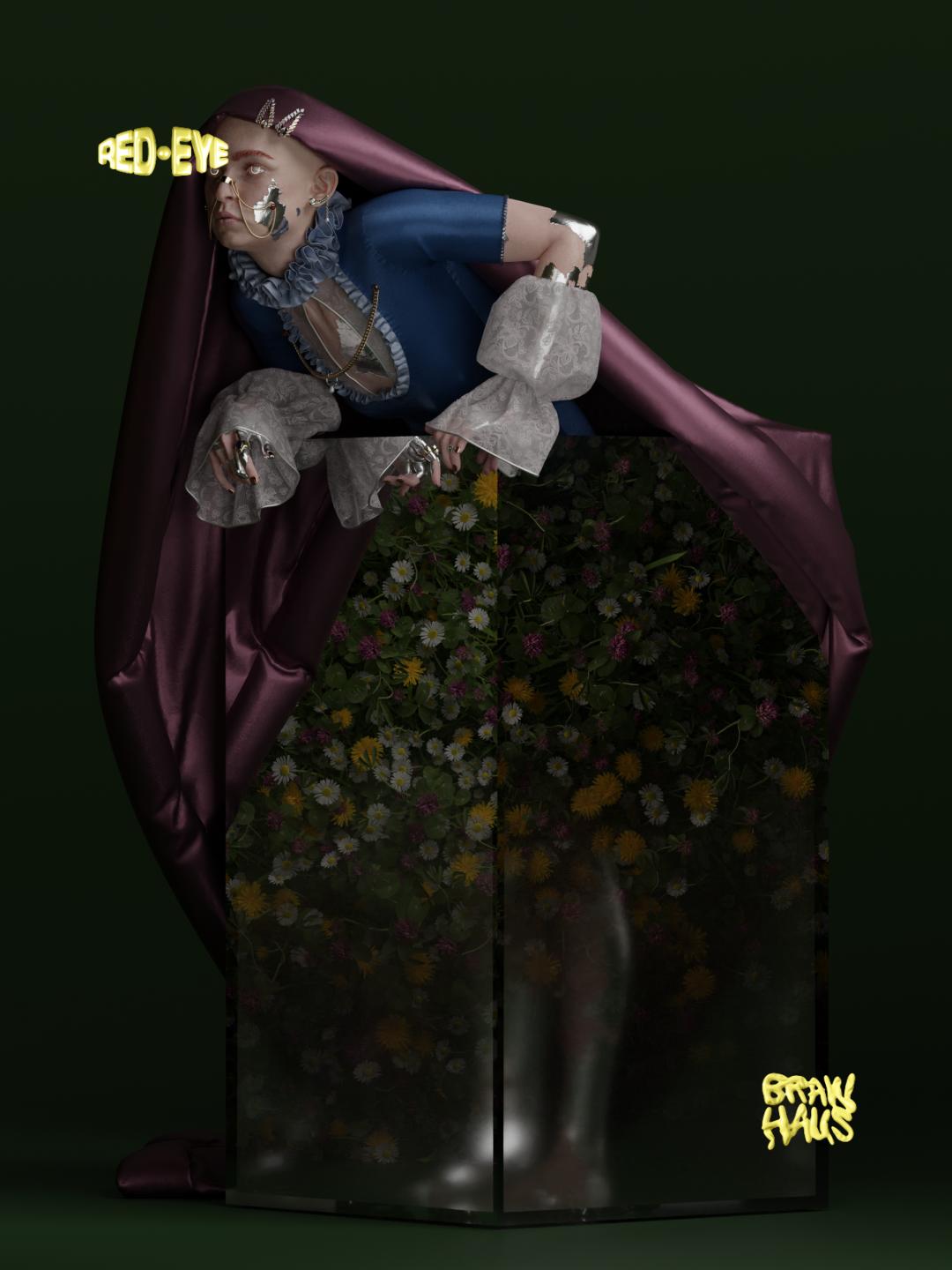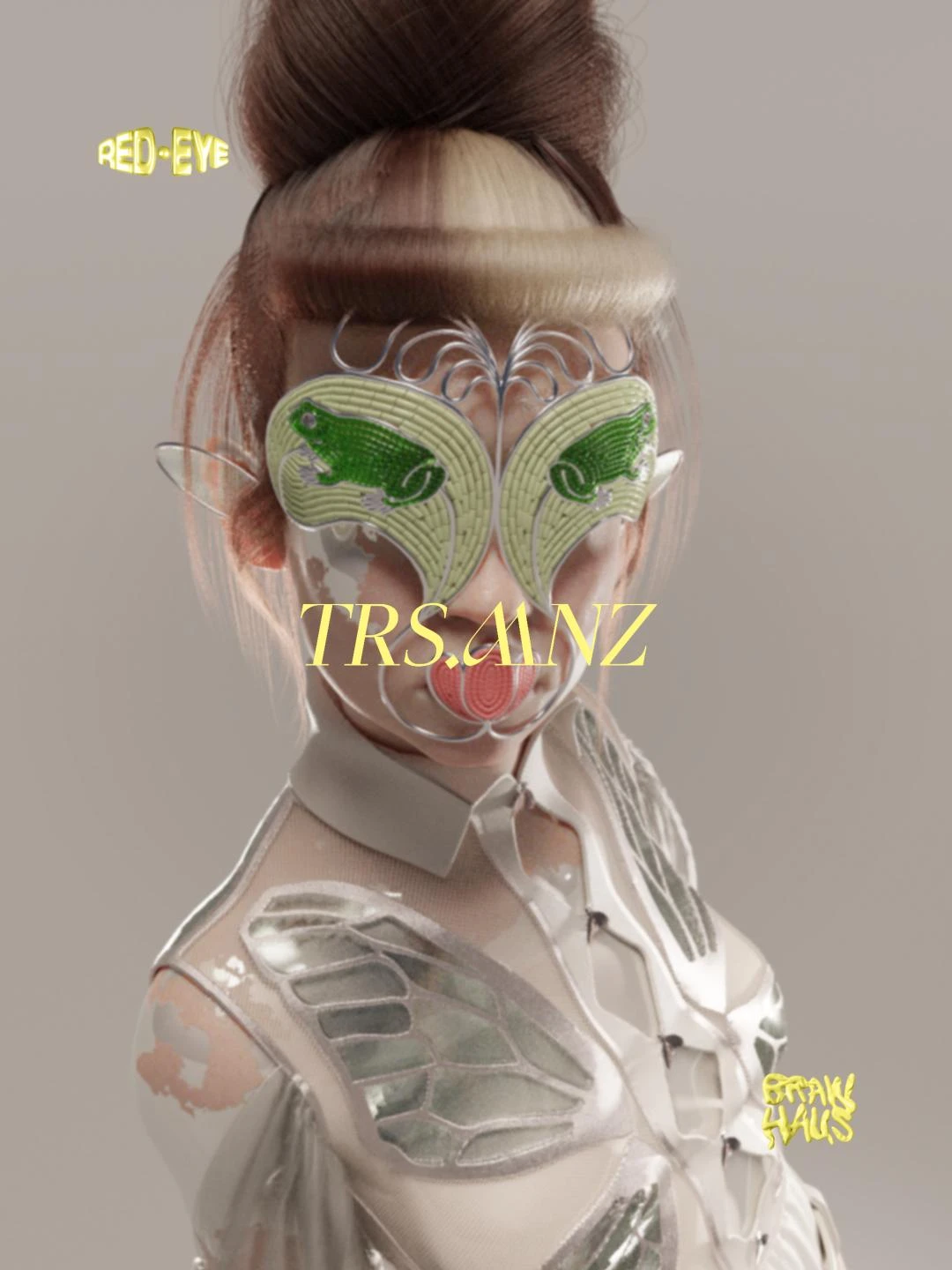
- Date
- 11 NOVEMBER 2025
- Author
- BRAW HAUS
- Image by
- TERESA MANZO
- Categories
- Interviews
Inside the Digital Worlds of Teresa Manzo: Exploring Humanity Through AI and Art
As part of an ongoing collaboration between RED-EYE Magazine and Braw Haus, we delve into the visionary world of @trs.mnz (Teresa Manzo) — a Neapolitan digital artist whose work merges craftsmanship, emotion, and technology into hauntingly beautiful visual narratives.
Born in 1991, Teresa’s artistic evolution reflects both her academic foundation in Interior Design and her formal training at the Academy of Fine Arts. Her digital practice represents a deeply emotional and stylistic journey — one that transforms memory and material into form. Within her works, ambiguous female figures emerge, suspended between the human and the automaton. They embody sensations and recollections, wrapped in delicate digital fabrics and metallic ornaments that seem to both reveal and protect their inner worlds.
Her avatars achieve striking photorealism, where light, texture, and surface are rendered with precision yet imbued with poetic direction. This synthesis of technical mastery and emotional resonance results in compositions that feel tactile, intimate, and timeless.
Her latest series, MODELS, expands upon this exploration. Each artwork incorporates a specific metal—its atomic number and elemental symbolism forming part of the title. These metals act as metaphysical conduits, amplifying the emotional charge of each figure while shielding them from the erosion of time.
Through Teresa’s lens, the digital body becomes both vulnerable and eternal — a mirror of our hybrid existence between flesh and code.
Discover more in our exclusive interview with trs.mnz, presented by RED-EYE x Braw Haus.
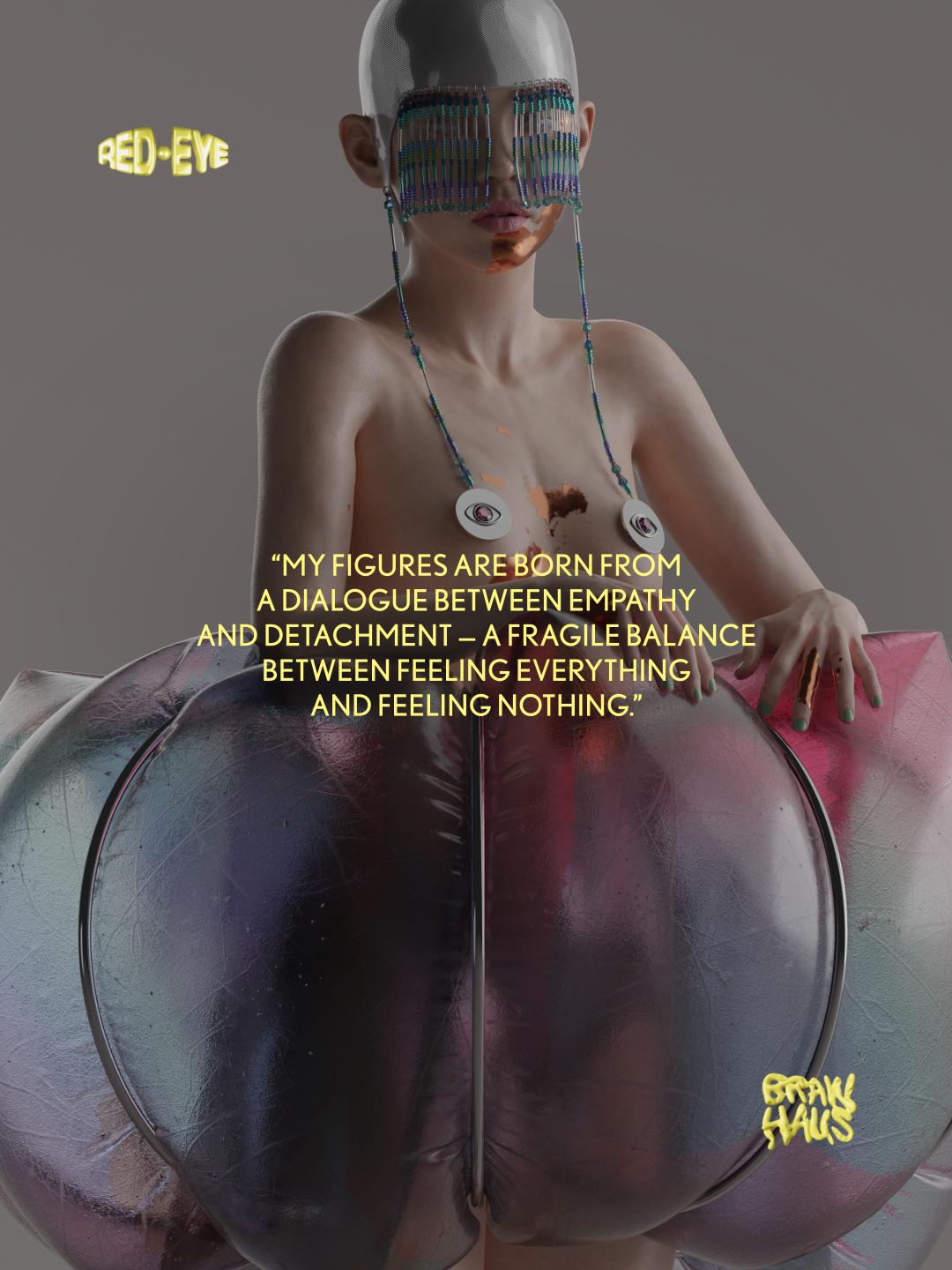
Can you tell us a bit about your background and how you started working with digital art?
Creativity has always been my playmate. As a child, in my aunt’s studio, I would gather fabric scraps from the floor and turn them into improvised dresses on the mannequin. Growing up, I kept weaving threads and ideas, from crochet pieces to little garments I gifted to friends. My studies in architecture and graphic design opened the door to project drawing and 3D, and after graduation, I felt the need to bring into the digital world what until then had only been shaped by my hands. Modeling software became a bridge between imagination and reality, turning my experiments into a language able to tell my story.
You portray female figures as both human and automaton, draped in interconnected jewels and fabrics. How did this visual language develop, and what does it signify emotionally?
It’s a question that has always accompanied me: each time I try to answer it, a new part of myself emerges, as if it had always been there, quietly waiting. In truth, this visual language developed naturally during the COVID period. Despite the challenges of those days, that time allowed me to slow down and create with a calm I had never known before. My figures are born from a delicate dialogue between sensitivity and empathy, often in contrast with the need to distance myself from emotions, almost to disconnect from what I feel. That is why they take on humanoid forms, suspended between the human and the other-than-self. The drapery and jewels become invisible threads, bridges between the intensity of feeling and the emptiness of feeling nothing, seeking a fragile balance between two extremes that coexist within me.
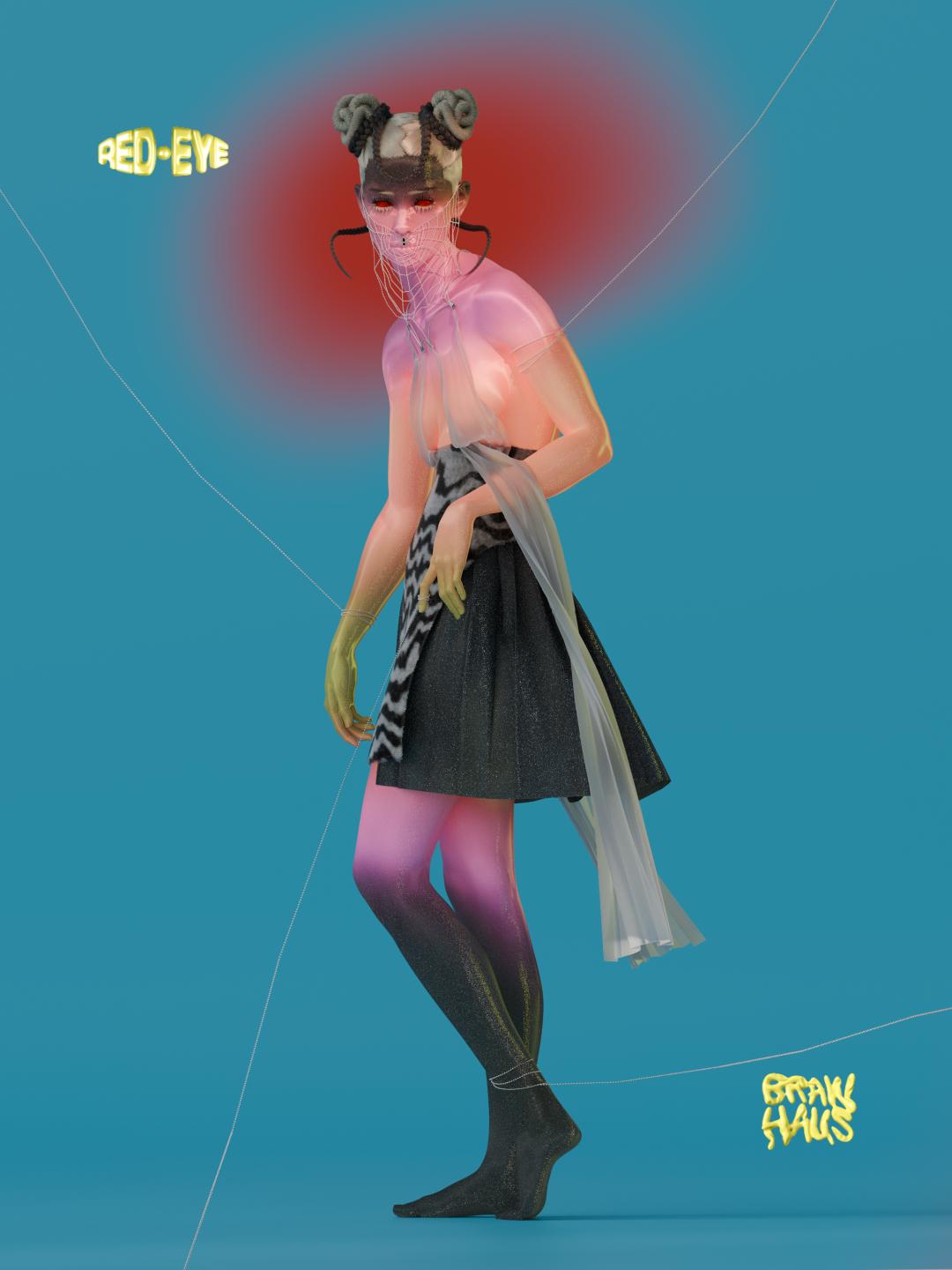
Are you incorporating ai in your workflow? If yes how, in which step of your process and which programs do you use?
I once tried to animate some of my older works using artificial intelligence, but the results often transformed them into something that couldn’t fully convey what I wanted to communicate. I felt it as a subtle depersonalization of the work, a bit like the fear that something precious might slip out of our control. Today, AI enters my process more gently: it is a piece of advice, a stimulus, a small mirror of possibilities that helps me see my work from new perspectives. I use it to create moodboards, gather visual inspirations, or dialogue with ChatGPT, but it’s always my hands and intuition that give the final shape to the pieces. It’s a bit like starting a relationship: there’s the fear of opening up, but also the wonder of discovering what can emerge together.
Do you have a particular piece or project you are most proud of? Can you walk us through why it stands out, and what challenges you faced?
The piece I feel most connected to is CLIPS. While creating it, I oscillated between intense emotions: excitement and joy, immediately followed by tears and the fear that I had somehow violated my avatar by adding blood, worrying that it might disturb anyone who viewed it. For a long time, I thought I would never show it. It stayed in progress, because every time I looked at it, something deeper emerged—not aesthetic, but a truth about myself that hurt and awakened intimate fears. Over time, however, I learned to see it for what it truly was: a form of therapy, a mirror reflecting a side of me that I have learned to accept. Today, I am proud of it and happy to share it with others.
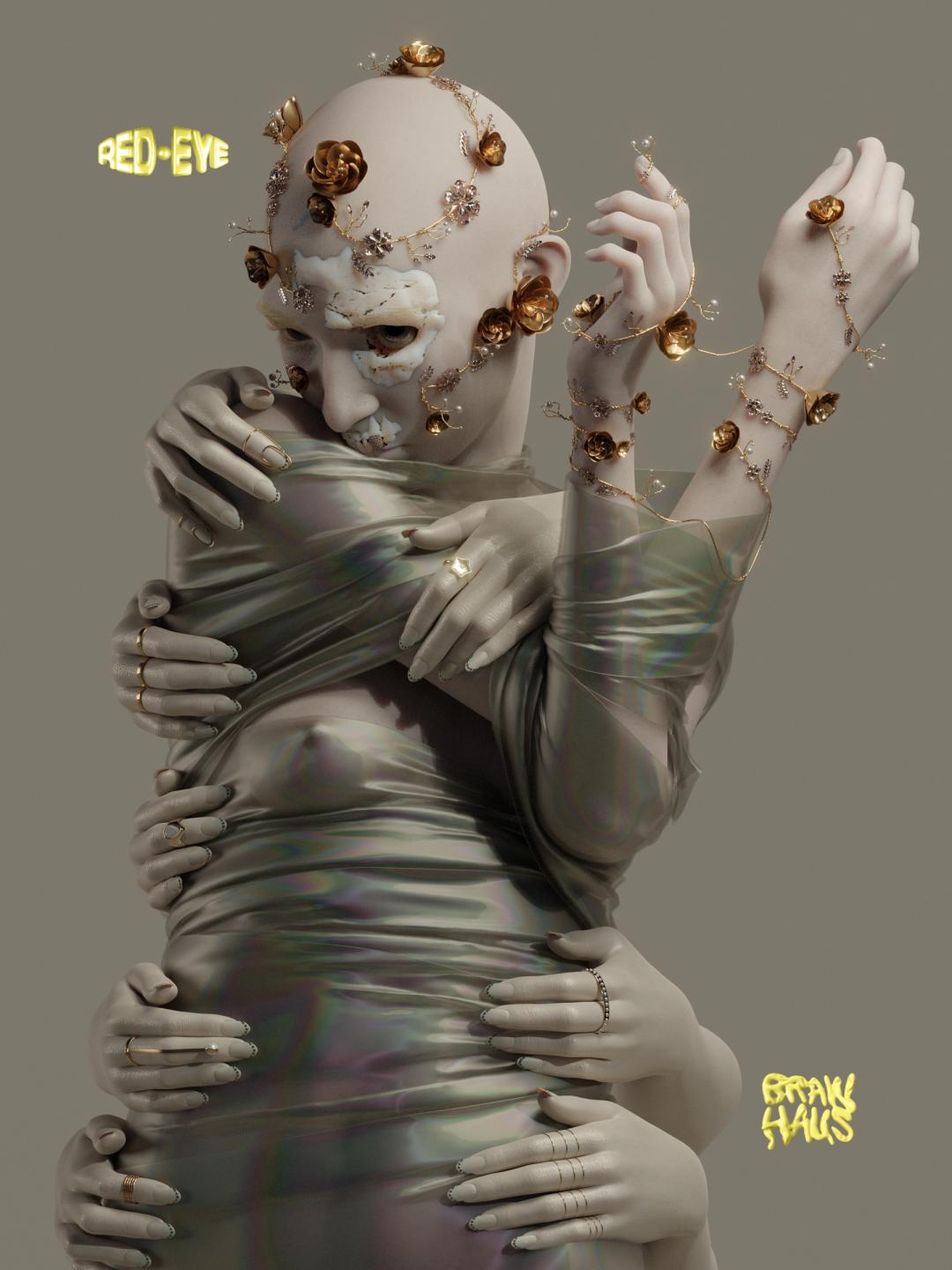
What creative frontier or expressive medium do you still hope to explore in the future?
I would like to deepen my relationship with artificial intelligence, going beyond a superficial use and discovering how it can become a silent, creative companion, capable of opening new paths of imagination. At the same time, I feel the call of the artisanal world, that slow and tactile dimension where hands and body are instruments of expression. The idea of blending digital and handmade approaches fascinates me—creating a bridge between different worlds that meet and complement each other could open up possibilities yet to be explored.
What would be your dream project?
My dream is to create a 360-degree exhibition of my works: beyond printed pieces, I want to recreate clothing, jewelry, and scenography, turning the artwork into a space to explore and inhabit. I imagine viewers moving freely among the elements, fully immersing themselves in my vision, experiencing every detail, every atmosphere. Being able to see and touch something that until now has existed only in the digital realm, bringing it closer to reality, would be a natural and inspiring step in my artistic journey.

With who would you like to collaborate and why?
I would like to collaborate with artisans, people who have no experience with digital tools. Coming from a fully digital background, working with those who create with their hands and real materials would be very stimulating: it would help me think more practically and concretely, without losing my creative vision and approach. I believe that working together could lead to interesting and tangible results.
